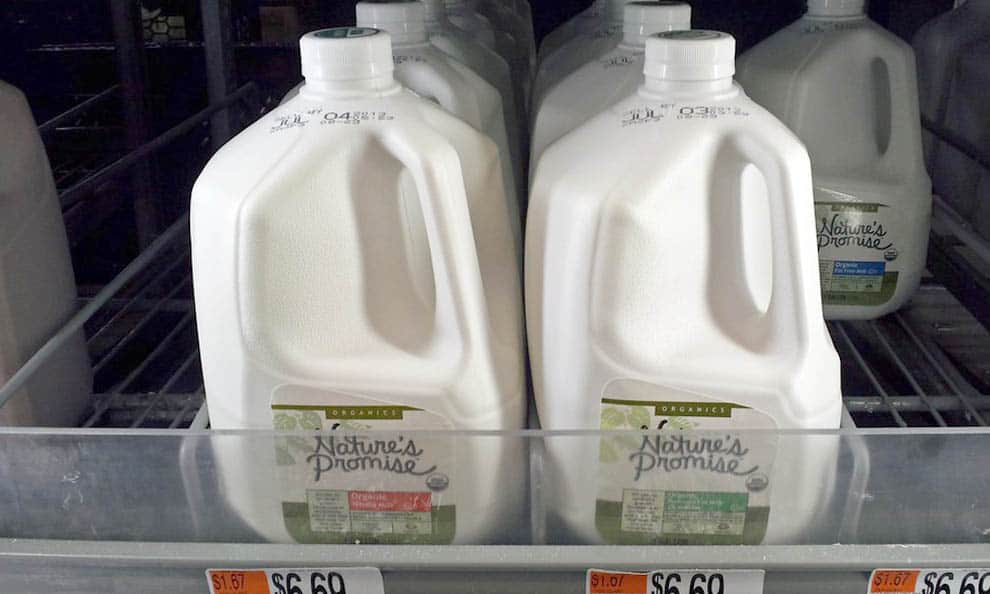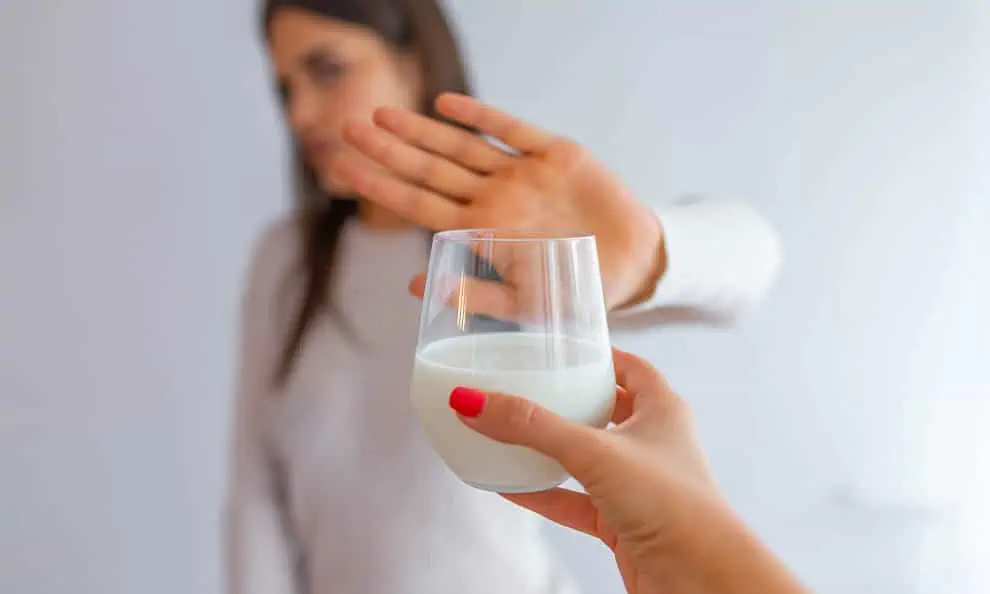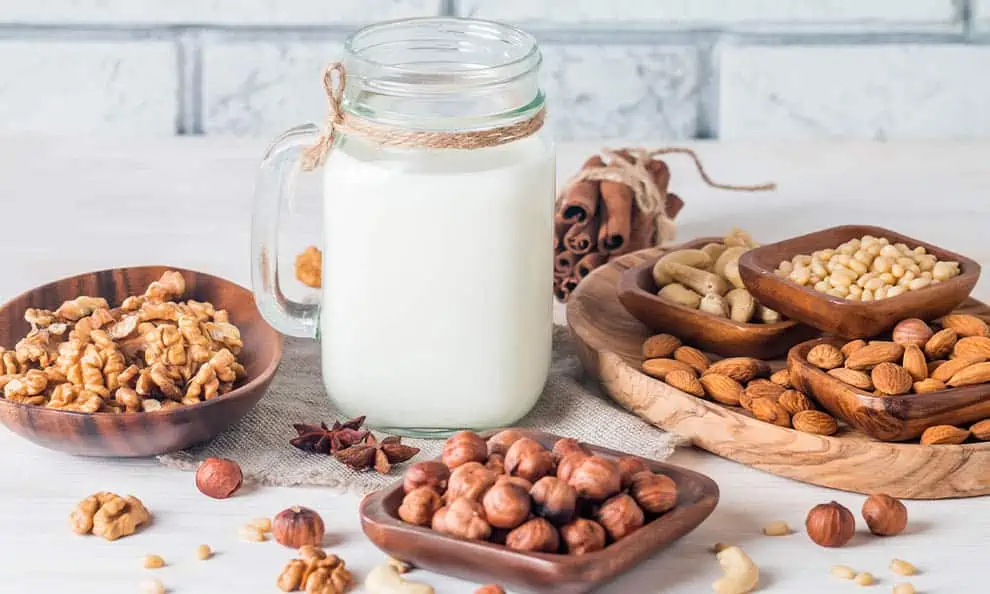Milk is likely one of the most versatile drinks out there. You can add it to cereal, protein shakes, smoothies, bake with it, and of course, you can drink it.
Most of us tend not to use the entire carton of milk in one go. Plus, unlike other popular beverages (e.g. soda and sparkling water), milk products, for some reason, tend to live inside the fridge after we open them.
That begs the question... How long does milk last after you open it?
Today we're going to explore the answer as well as what you can do to extend the shelf-life of your milk.
Expiration Labels

First, let's talk about the most obvious indicator of when milk goes bad: the expiration label. After all, the best way to tell if something is still safe to eat or not is if we follow the date the very manufacturers stamped on the bottle or carton.
The biggest issue with these labels is that milk products tend to use different “expiry dates.”
They're usually one of the following...
- Expires On Date: This label indicates the product starts to decay after it crosses the "expires on" date. This means the milk itself may not have gone bad, but the promised quality by the manufacturer may no longer be evident. For example, you may notice that the creaminess or thickness of the milk is gone (as it becomes more like water), the taste is blander, and in some cases, there is evidence of separation due to curdling.
- Sell By and Use By Date: Both “Sell By” and “Use By” dates are not really intended to be an exact date that tells you when the milk spoils, but rather to be used as a general indicator that spoiling is likely to happen soon. The “Sell By” label tells the store or retailer how long to display their products. One of the reasons some companies do this is to keep aging products from being sold to consumers. The “Use By” label is the last date the product is at peak quality.
- Best Used By Date: The “Best Used By” label indicates that it's still safe to drink even after the product crosses the date, though quality may be compromised after passing that day.
One key thing to remember when looking at any of these dates is that they only apply under one condition—the milk bottle or carton hasn't been opened yet or tampered with.
If the bottle has been opened or has been somehow exposed to outside air, it compromises the milk inside.
How Long Does Milk Last After It's Been Opened?

Today, in addition to one of the labels listed above, most milk brands have a notice on the label that tells consumers how soon the milk should be consumed after opening.
After opening, most milk manufacturers recommend drinking the milk at or within 7 days. This assumes the milk didn’t have any bacterial contamination after opening and is stored in temperatures of below 40 degrees Fahrenheit.
However, it's not so cut and dry. The main issue that arises is that there could be situations where you open the milk, seven days goes by, but the expiry date labeled on the carton hasn't passed yet.
I've run into issues like this in the past and it's always frustrated me. Do I take a chance and drink the milk or throw it away and possibly waste it? That's why I started writing out the date the carton was opened on the container with a marker. It may seem like a silly extra step but it's saved me quite a few times. Here's an example of what I mean.
How To Know When Milk Is Spoiled

While the 7-day rule is the most widely recognized milk-expiry reference, unfortunately, it can be arbitrary in many cases. This is because sometimes milk goes bad even after a day or two because it was somehow contaminated after opening. Other times, the milk can technically still be good 7-days after opening.
This is why you should always add another layer of security over the 7-day rule by going with what your senses tell you too.
Here are some of the most common indicators of milk spoilage...
- Unpleasant or sour smell: Sniffing your milk before drinking is always a good idea, especially if it’s been opened for a few days. Fresh milk doesn’t really have a distinct smell to it other than having a classic “milky” smell. If you smell something off or something makes you recoil, I don't recommend taking a chance.
- Curdling: Curdling happens when milk has been left too long and it becomes acidic. The acidity causes milk proteins to curdle or form lumps, called "coagulation", which then float on the surface. Milk shouldn’t have any texture to it other than being smooth or creamy. If you notice curdling or small lumps, chuck it.
- Solid residue: Similar to curdling, except the solid lumps are found at the bottom or stuck on the sides of the container.
- Yellowish color: Milk is supposed to have a clean white color. If you see it looking more yellow than white, it’s likely gone bad.
- It's been left outside of the refrigerator: You shouldn’t leave milk to sit out at room temperature longer than two hours. That time is cut in half to 1 hour if the temperature outside is 90 degrees Fahrenheit or more. This is because the bacteria present in milk are mesophilic, or the type that grows rapidly in room temperature. The longer that milk sits at these temperatures, the faster bacteria can grow and further compromise the milk.
What Causes Milk To Go Bad?

The most common cause of milk spoilage is the growth of parasites, bacteria, and/or fungi.
Those microbes metabolize milk components that create by-products. These by-products change the texture, taste, appearance, and smell of milk (the same things we listed above to look for when judging milk that’s gone bad).
Where do these microorganisms come from? You’d be surprised to find that these microbes have always been there, and it wouldn’t be milk if they weren’t.
While there are ways to destroy or at least inhibit the growth of microorganisms in our milk (for example, pasteurization) our milk is never going to be 100% sterile. This is due to the process that takes milk from a cow to our home.
Here's how that process works...
First, the cow is milked. That milk is then cooled down and stored in a refrigerated tank in order to inhibit the growth of microbes.
From there, the the milk is sent to a processing location where it is pasteurized, homogenized, and packaged to be shipped to the grocery store.
While the entire process does a good job at minimizing and inhibiting any growth of bacteria and other microbes, it's never going to be perfect. Any small microbes or bacteria that make their way through eventually work through the process of breaking down the milk, causing it to spoil over time.
The good news is spoilage is a numbers game. So long as we keep the bacterial count to a minimum (safe for human consumption), your milk is safe even if it does have bacteria swimming in it.
What Happens If I Drink Expired Milk?
Accidentally taking a sip of spoiled milk is unlikely to cause any symptoms of sickness. It only becomes an issue if you ingest large amounts of it. If that were to happen, you might experience nausea, stomach pains, vomiting, and diarrhea. Fortunately, the symptoms often subside within 12-24 hours.
Of course, if you are in pain, it's recommended to contact a medical professional.
Simple Ways To Extend Milk Shelf-Life
If you constantly find yourself reaching for the milk in your fridge, only to be let down by the fact that it's gone bad, these are the tips you'll want to follow in order to extend its shelf-life.
1. Sprinkle some salt in it.
This may sound crazy but adding a pinch of salt has been shown to extend the life of an opened milk carton. It’s an unpopular, but effective way to give your milk up to 7 more days of freshness after opening. This is because salt (specifically, the sodium part) “steals” unbound water from bacteria. In doing this, bacterial growth slows down.
2. Freeze your milk.
If you're unable to consume your milk prior to its expiry date, you can safely freeze it for up to 6 months. There shouldn’t be any noticeable difference, except in color. This is because when you freeze milk, it turns a bit yellow but not because of bacteria, rather it's due to its protein and fat content. When you freeze milk, water molecules tend to form big chunks together, squeezing proteins and fat out to the surface. These two just happen to give off a yellowish color.
3. Don't let milk sit out.
Keeping milk inside the fridge is common sense because, as we mentioned earlier, the bacteria innately found in milk are unable to grow in colder temperatures. The cooler it is, the less likely they will multiply and cause spoilage. For this reason, you'll want to make sure that you return milk to your refrigerator as soon as your done using it. The longer that milk has time to warm itself to room temperature, the higher the likelihood that bacteria can grow and begin spoiling the milk.
4. Correct refrigerator storage.
Most of us keep our opened milk cartons by the door side of the fridge. This is actually not an optimal place for milk to be stored. Why? Every time you open your refrigerator door, that section gets repeatedly exposed to room temperature (or at least fluctuating temperatures).
It's best to keep milk near the back of the fridge, where it's most likely to stay cold, even when the door is opened.
5. Practice good hygiene.
This one is simple enough to understand. If your hands have bacteria on them and you go to open your carton of milk, that bacteria could be transferred to the milk. Be sure to open milk with clean hands to slow down the spread of bacteria and other microbes.
Different Milk, Different Expiration

Not all milk is created equal. Different types of milk expire in different ways and in different times. This is due to the processes used to create these types of milks and the ingredients used. Let's explore how long some of the most common alternative forms of milk last.
1. How Long Does Condensed Milk Last After Opening?
Condensed milk will likely outlast every other milk product in your house because of its sugar content.
Like salt, sugar tends to steal unbound water from microbes, making it have low moisture content and preventing microbial growth that leads to spoilage.
Unopened condensed milk typically lasts a year or two after its expiry date. For example, if it says 2 years, it’s likely still safe after 3 years. If opened, it can last up to 3 weeks or longer inside the fridge, depending on when it’s used or how often it’s taken out.
2. How Long Does Evaporated Milk Last After Opening?
Evaporated milk is milk that has been dehydrated to contain about 40% water (with 60% of the water content removed). It’s also sterilized at a high temperature, which explains its slight caramelized flavor, darker color, and why it lasts longer than regular milk.
Evaporated milk should last for at least 3 months past the expiry date listed on the bottle. However, it's likely to last further—between 6 and 12 months. Opening it will only make it last up to about the same time as fresh milk (or 7 days).
3. How Long Does UHT Milk And Pasteurized Milk Last After Opening?
Both UHT and pasteurized milk have undergone a special heating process that extends the shelf-life of fresh milk.
UHT means ultra high temperature, as the milk passes through a pipe heated to about 135 to 154°C (275 to 309.2°F) for 1 to 8 seconds. This allows the milk carton to be stored without refrigeration for months.
Pasteurized milk has undergone pasteurization, or when the milk is heated to about 71.667°C or 161° F for about 15 seconds.
Both aim to sterilize or “pacify” the bacteria in milk, but they do differ in the end product.
- Since UHT milk uses high temperatures, the resulting milk has lower protein content and has some nutritional differences.
- Pasteurized milk temperature is lower, so the nutritional content doesn’t change much while maintaining a strong milk taste. Its texture is also thicker due to its higher protein and fat content
4. How Long Does Plant-Based Milk Last After Opening?
There are 5 different categories of plant-based milk:
- Cereal: Oat milk, Rice milk, Corn milk, Spelt milk.
- Legume: Soy milk, Peanut milk, Lupin milk, Cowpea milk.
- Nut: Almond milk, Coconut milk, Hazelnut milk, Pistachio milk, Walnut milk.
- Seed: Sesame milk, Flax milk, Hemp milk, Sunflower milk.
- Pseudo-Cereal: Quinoa milk, Teff milk, Amaranth milk.
Just because plant-based milk doesn’t have dairy in it doesn’t mean it doesn’t expire or it can be left out in the open for a longer period of time.
Each individual type of plant-based or "vegan" milk has a different composition and, thus, expire in different ways and times. It's important to check the individual plant-based milk cartons to understand when they expire. Here is a great resource that compiles some of the more popular plant-based milks and their expiration times.
While they all expire in varying time lengths, it is known that plant-based milks have a much longer shelf life than their dairy counterparts.
Wrapping Up
While it's recommended to always follow the expiration dates printed on any type of milk you purchase, it's not always as simple as it seems.
Whether it's trying to decipher what the difference is between a "best by" date and a "sell by" date or how long opened pasteurized milk lasts compared to plant-based milk, it's usually never a clear-cut situation.
Hopefully this article gave you the information and guidance needed to make a better informed decision when pulling milk out of the refrigerator and asking the age old question, "is this milk still good?"
Have a question about anything covered in this article? Feel free to leave your comment below and I'll answer it as soon as possible!













This article is very helpfull,I have no sense of smell,live on my own. Wife died.Thank you for the info.